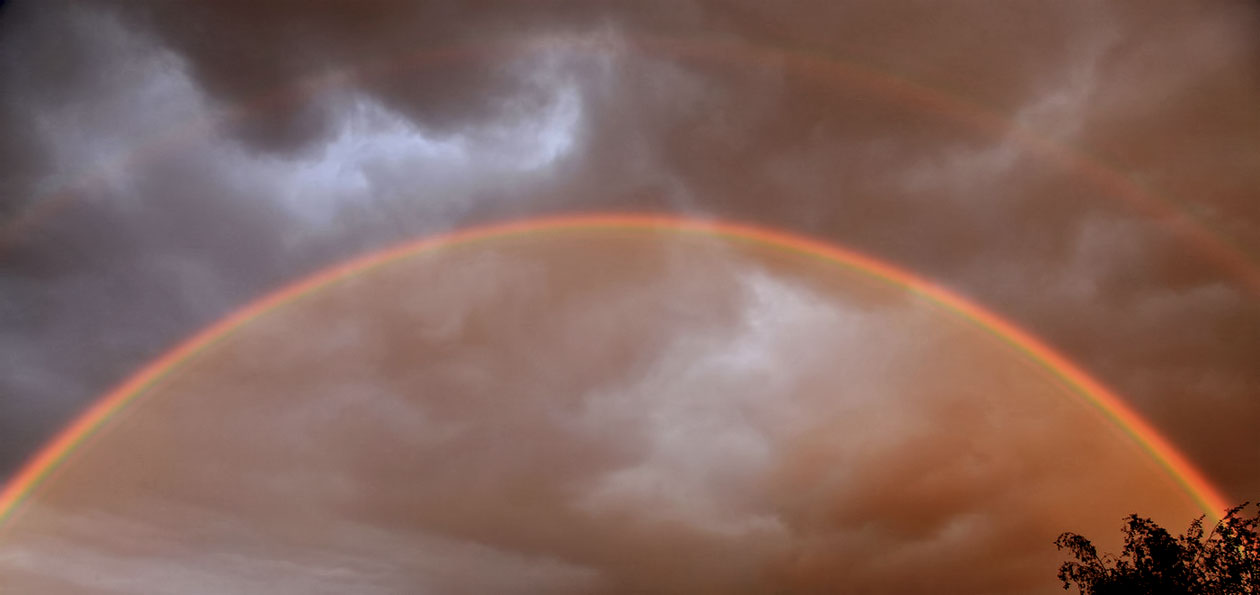
Secondary Rainbow Multiple Supernumeraries |

| About - Submit | Optics Picture of the Day | Galleries | Previous | Next | Today |
| At left the formation of primary supernumeraries is shown. Secondary ones form in the same way. Two classical ray paths contribute to the light at any point on a rainbow. But light is a wave phenomenon and the wave crests of the two emerging waves can coincide or be out of phase, depending on the viewing angle and wavelength. When the crests coincide there is a bright arc, a supernumerary bow. |
 |
 |
 |
 |
 |

| This simulation, adapted from Philip Laven's MiePlot, shows why secondary supernumeraries are seen so rarely (although they are probably unknowingly photographed more often). Here the sun illuminated drops are all 0.5mm diameter to avoid blurring by variations in droplet size. Good supernumeraries need droplets of very similar sizes. The primary supernumeraries are closely spaced and there are pronounced angular oscillations in brightness - the vertical intensity scale is linear. In contrast, secondary supernumeraries are widely spaced and there is little variation in brightness between a fringe maximum and minimum. Note how well the Mie scattering prediction reproduces the brightness inside the primary bow and the darkness of Alexanders dark band between the primary and secondary rainbows. |